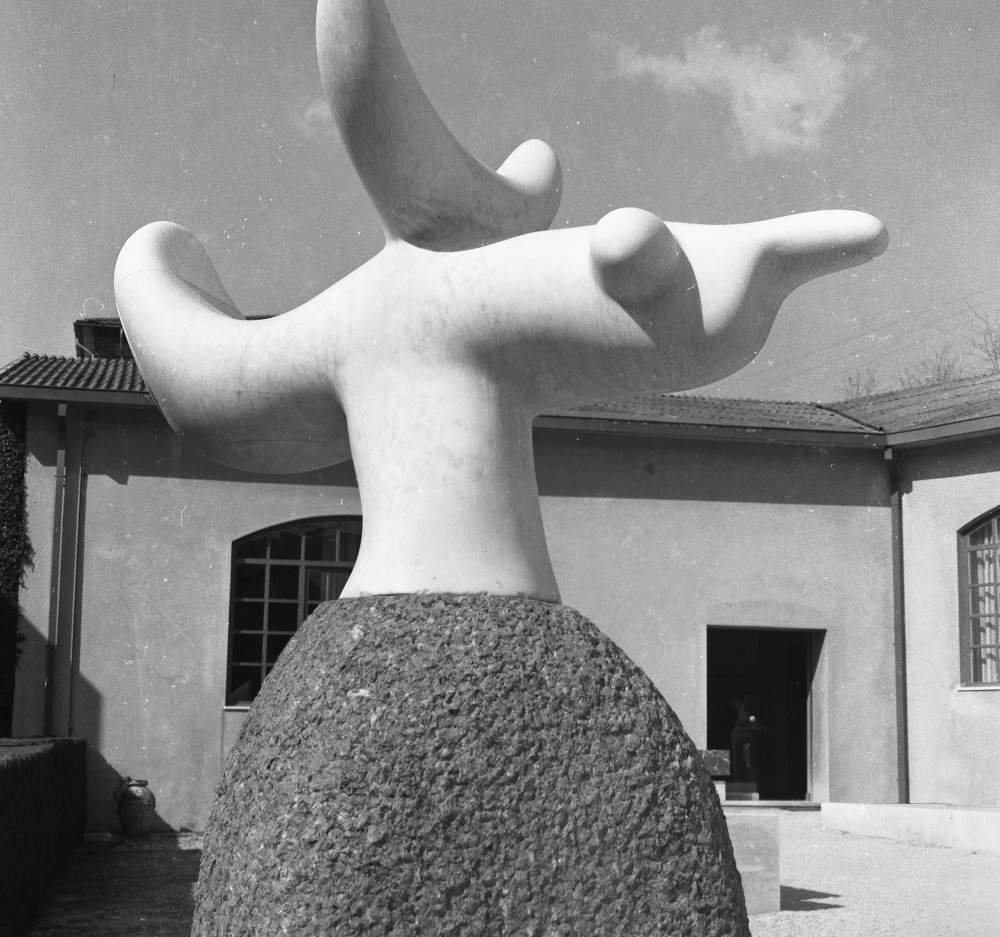From June 10 to July 17, 2022, the Gallerie d’Italia in Milan will host the exhibition Collezione Henraux 1960-1970, curated by Edoardo Bonaspetti, Artistic Director of the Henraux Foundation. The exhibition is dedicated to the significant collection of marble sculptural works created by theTuscan marble company.
Set up in the Cortile Ottagono and Giardino d’Alessandro of the Gallerie d’Italia, the exhibition will display seven of the twenty-five Henraux sculptures in the Intesa Sanpaolo collection. On the occasion of the exhibition, the entire nucleus of sculptures underwent a major conservation intervention. Beginning with the enhancement of the seven sculptures in Intesa Sanpaolo’s collection, documents, archival photos, models and reproductions organized in thematic nuclei will be presented to tell the story of the vital context in which the sculptures were created, the birth of the Henraux collection and its example of corporate culture.
The Milan exhibition will anticipate the major exhibition to be held in Querceta di Seravezza, at the headquarters of the Henraux Foundation, from July 25 to September 18, 2022.
Over the course of more than two hundred years of activity, the Henraux Foundation has been the protagonist of numerous projects and collaborations in international visual culture. Founded in 1821 by former Napoleonic officer Jean Baptiste Alexandre Henraux and Versilia entrepreneur Marco Borrini, the marble company’s journey is intertwined with important contributions in the world of art, architecture and restoration. It was after World War II that Henraux became linked to the visual arts through the leadership of Erminio Cidonio, who took over as sole director of the company in 1956. Henraux redefined its entrepreneurial and cultural identity, seizing in the national artistic dynamism and fervor the possible opportunities between sculptural experimentation and industrial production. A meeting in 1957 with British sculptor Henry Moore, who had come to Versilia to create the monumental abstract work Reclining Figure destined for the UNESCO headquarters in Paris, fostered this momentum and helped to launch a flourishing period of artistic innovation and research. Within a few years Jean (Hans) Arp, Pietro Cascella, Rosalda Gilardi, Emile Gilioli, Jacques Lipchitz, Morice Lipsi, Joan Miró, Isamu Noguchi, Maria Papa Rostkowska, Giò Pomodoro, Antoine Poncet, François Stahly, Georges Vantongerloo and many others came to Querceta and made their works with Henraux’s craftsmen and marbles, contributing to a broader cultural revitalization of the company and its territory. In the late 1960s and early 1970s, the vigor of this experience began to wane due to changed business strategies, and shortly after being exhibited in 1972 at the Cortile d’Onore of the Palazzo dei Diamanti in Ferrara, the collection dispersed. Twenty-five works in 1973 were acquired by the then Banca Commerciale Italiana under the enlightened chairmanship of Raffaele Mattioli, and then merged into what is now Intesa Sanpaolo’s modern and contemporary art collection.
Image: Joan Miró, Oiseau solaire (1968). Photo by Ilario Bessi
 |
| Marble sculptures from the Henraux Collection on display at Milan's Gallerie d'Italia |
Warning: the translation into English of the original Italian article was created using automatic tools. We undertake to review all articles, but we do not guarantee the total absence of inaccuracies in the translation due to the program. You can find the original by clicking on the ITA button. If you find any mistake,please contact us.